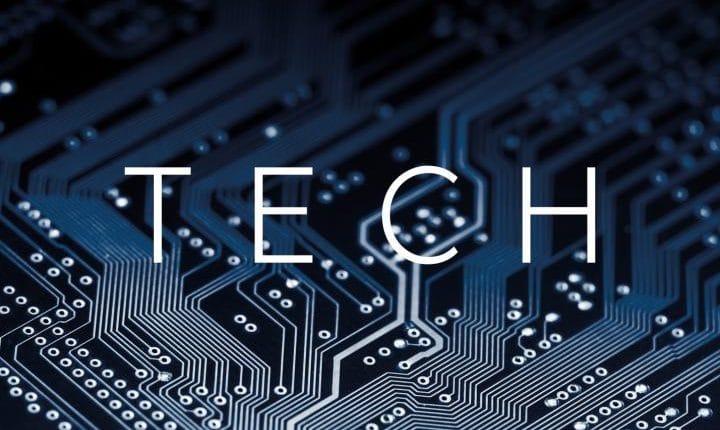Technology has dramatically transformed education, making learning more interactive and accessible compared to just a few years ago. Traditional teaching methods have evolved into innovative approaches where digital tools are now integral to education, leading to more flexible forms of learning, including blended learning approaches and virtual classrooms. This article explores how technology influences contemporary learning spaces, discussing its benefits in increasing online learners’ engagement, adapting curricula to societal needs, and addressing challenges faced by educators.

Table of Contents
The Rise of Digital Tools in Education
The introduction of digital tools has revolutionized teaching and learning, creating a more interactive experience for both students and educators. During the era of school closures, platforms like Google Classroom, Microsoft Teams, and Zoom became essential for communication between students and teachers. As these digital tools continue to evolve, students may also seek help from services that offer to “write my paper for cheap” to manage their workload more effectively. Technology supports best-practice teaching, with 75% of teachers at ISTE reporting they use it in daily instruction to enhance student engagement and improve learning outcomes.
Digital tools not only support learning but also offer customized experiences for users. For instance, adaptive learning technologies tailor educational materials to meet each student’s needs, allowing them to progress at their own pace. This individualization is crucial for catering to various learning styles and ensuring all students can succeed.
Key advantages of digital tools in education include:
- Improved communication and collaboration between students and faculty.
- Adaptive technologies that create personalized learning experiences.
- Accommodation of different learning pathways.
- Increased student participation and engagement with course material.
Enhancing Student Engagement Online
One of the biggest benefits of technology in education is its ability to engage students online. In traditional classrooms, students often struggle to maintain interest, while digital platforms offer interactive features that capture learners’ attention. Incorporating multimedia such as videos, podcasts, and interactive quizzes makes lessons more engaging.
Gallup research shows that engaged students are 2.5 times more likely to achieve excellent grades and 4.5 times more likely to feel hopeful about their future compared to their disengaged peers. This highlights the critical role of student engagement in online learning environments. Educators can further enhance engagement through gamification, which uses game design elements to make learning more fun and motivating.
Implementing Blended Learning Strategies
Blended learning combines conventional classroom teaching with online elements to create a more immersive and dynamic educational process. It strikes a balance by allowing face-to-face interaction where necessary, while utilizing the advantages of digital tools. According to a report by the Clayton Christensen Institute, blended learning has the potential to improve student achievement, particularly in math and reading.
However, successful blended learning requires careful planning, well-coordinated instruction, and intuitive technology integration. Educators must adapt their teaching styles to seamlessly incorporate both in-person and online components. This could involve rethinking assessments, setting up online forums, or using collaborative tools to make group work more accessible.
Key considerations for applying a blended learning strategy include:
- Balancing in-person and online learning for a unified experience.
- Redesigning assessments to suit both online and face-to-face environments.
- Utilizing collaboration tools to enhance group work.
- Providing training and support for educators transitioning to blended learning.
Virtual Classrooms and Remote Learning
The COVID-19 pandemic significantly accelerated the adoption of virtual classrooms and remote learning, pushing educational institutions to quickly adapt to a new reality. Virtual classrooms allow educators to transcend geographical boundaries and provide support to students regardless of their location, making education more accessible. Many schools and universities have since embraced eLearning as a permanent alternative to traditional classroom settings.
One of the greatest advantages of virtual classrooms is their ability to keep students more engaged online. While traditional classroom environments may struggle to maintain the interest of all students, digital platforms offer numerous interactive features that capture attention. Educators can make lessons more engaging by incorporating multimedia like videos, podcasts, and interactive quizzes. For example, tools like Crash Course videos or online quizzes can help transform ordinary lessons into more dynamic learning experiences.
Research by Gallup shows that engaged students are 2.5 times more likely to achieve excellent grades and 4.5 times more likely to feel optimistic about their future compared to their disengaged peers. This underscores the critical role that student engagement plays in online learning environments. As remote learning becomes more prevalent, some students might turn to an essay writing service for additional support to manage their academic responsibilities. To further motivate students, educators can implement gamification, which applies game design elements to learning activities, making education more enjoyable and immersive.
However, remote learning is not without its challenges. A significant issue is the unequal access to technology and stable internet connections. According to Pew Research Center, nearly 15% of U.S. households with school-age children do not have high-speed internet, with the disparity more pronounced among lower-income families. This digital divide creates inequity in the learning process, as some students are unable to fully participate in virtual classrooms.
To address these challenges, educators must adopt inclusive teaching practices that provide resources and support for students with limited access to technology. This can include offering flexible learning opportunities, supplying necessary technological tools, or providing alternative offline resources. By striving for inclusivity, educators can help ensure that all students, regardless of their circumstances, can benefit from remote learning.
Adapting Curriculum to Technology
Blended learning strategies integrate traditional classroom instruction with online learning, providing a more flexible and dynamic educational environment. Students benefit from both in-person interaction and digital tools, leveraging the strengths of each. Research by the Clayton Christensen Institute shows that blended learning can significantly improve outcomes in critical areas like math and reading.
However, adopting blended learning cannot be done haphazardly. It requires thoughtful curriculum design and technology integration. Instructors must restructure their teaching methods to seamlessly blend physical and digital classes, ensuring a smooth learning experience. This could involve redesigning assessments, using online discussion forums, and incorporating collaborative tools for group work.
Key factors for implementing blended learning include:
- Integrating online and in-person activities for a comprehensive learning experience.
- Adjusting assessment methods for both environments.
- Leveraging collaborative tools to support group work and discussions.
- Providing ongoing training and support for educators.
The Future of Technology in Education
The future of education is promising, with trends like artificial intelligence (AI), virtual reality (VR), and augmented reality (AR) expected to transform learning environments even further. AI can analyze student data and recommend resources tailored to individual learning needs, while VR and AR make learning interactive by bringing abstract concepts to life in immersive virtual worlds.
As technology continues to evolve, educators must remain adaptable and seek innovative solutions. Ongoing professional development and training are essential to help teachers integrate new technologies effectively into their classrooms. Organizations like the International Society for Technology in Education (ISTE) offer valuable support for educators looking to enhance their digital skills and stay updated on the latest tools.
Final Considerations
Technology plays a pivotal role in modern learning environments, reshaping how students engage with course material and interact with educators and peers. By incorporating digital tools, enhancing student engagement, and adopting blended learning strategies, educators can create more inclusive and dynamic learning experiences. However, challenges like the digital divide must be addressed to ensure that all students can benefit from these advancements. Moving forward, the integration of technology in education will be key to fostering meaningful, equitable learning opportunities for all.









